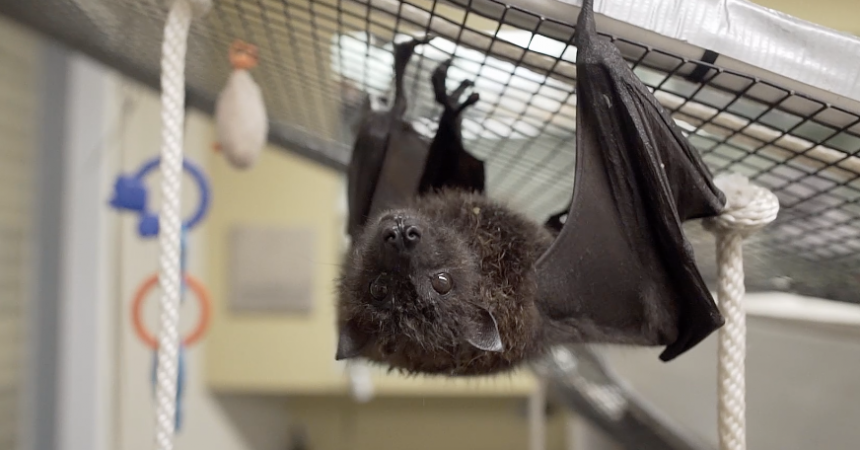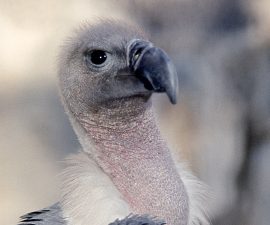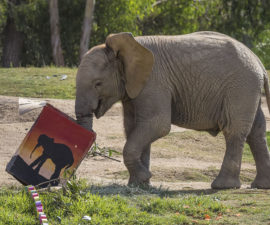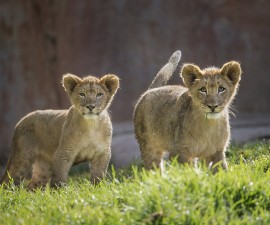A Young Endangered Rodrigues Fruit Bat Learns to Fly
As any aircraft pilot will tell you, it takes many hours of studying and many practice flights before you are fully qualified to fly solo. Lucas—a four-month-old endangered Rodrigues fruit bat that was hand raised at the San Diego Zoo Safari Park’s Ione and Paul Harter Animal Care Center after the death of his mother—has just started to use his wings on a couple of practice flights, although they are more like flutters right now. But soon, this little flier will embark on a nonstop adventure with his fellow colony members at the Bat House, here at the Safari Park. Before this can happen, his keepers—or maybe I should say “copilots”—must make sure that he feels secure and confident on this mission, to take flight and spread his wings.
We noticed on March 27 that Lucas was more eager to move about outside his housing. We added some mesh fencing, ladders, and cubes so he could move with ease, climbing from area to area. Soon after that, with a swinging motion—rocking back and forth—he rocked forward one last time, and then let his feet go and fluttered toward me. With excitement, we knew that this was it: it was time to teach Lucas, aka Bat Boy, to fly.
Now, the tricky part was getting him to control his flight pattern. Fortunately, his keeper copilots knew just what to do. We would have him hold onto our fingers with his feet, swing him back and forth gently, and then—on the count of three—let him go, allowing him to flap his wings to feel the air beneath them. One keeper stood at a higher elevation, while another keeper was standing by at ground level. By doing this, Lucas, was able to flutter downward while flapping his wings to guide him in a certain direction. He sometimes came in a little hard on the landing, but he always had a soft cushion as a runway—and, of course, we were there to catch him. Over time, he gained confidence in his abilities and started taking more practice flights. In fact, his confidence has grown so much that he is now “starting his final approach” to living at the Bat House permanently, with the rest of his colony.
On May 10, Lucas gave us the “all clear” sign that he felt comfortable to be left overnight at the Bat House. He had been making visits there for a few weeks, in an off-exhibit housing area. This gave him the opportunity to get his bearings in this new environment. The new smells, sights, and sounds were a bit much for Lucas in the beginning, so we started off slow. After 10 to 15 minutes here and there, his visits eventually increased to several hours in length.
After some discussion, we agreed that it was time for Lucas to “fly solo” overnight, in the same off-exhibit room where he was spending his days. Melvin, one of the Bat House residents, can often be seen looking through the window into the room, to get a glimpse of Lucas. Maybe Melvin will eventually be his copilot, as Lucas learns the ins and outs of this new territory. Lucas will soon be ready to join his colony at the Bat House, and we couldn’t be more proud of our Bat Boy.
Jules Anderson is a mammal keeper at the San Diego Zoo Safari Park.





